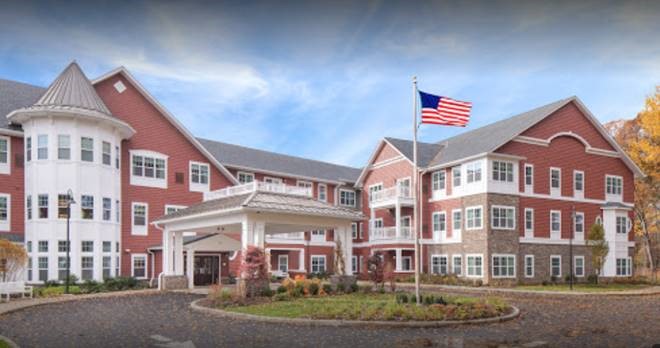Despite a pandemic-induced pullback in lending volume, the agencies remain committed for the long term to borrowers in need of debt financing.
By Jeff Shaw
Many parts of the seniors housing industry slowed as a result of the COVID-19 pandemic, including the lending market. Fannie Mae and Freddie Mac, the two giant government-sponsored enterprises (GSEs), experienced a significant pullback in deal volume in 2020, but remained two of the larger capital sources in the sector.
“We are the predominant lender in the space,” says Steve Schmidt, national director of seniors housing loan production with Freddie Mac. “We stayed active at the height of the pandemic. Our underwriting changed, but we were still very active.”
Freddie Mac’s annual lending volume in the seniors housing sector fell 45 percent year over year, from $3.8 billion in 2019 to $2.1 billion in 2020.
Fannie Mae’s drop was even more dramatic. After growing from $2.3 billion in 2018 to $3.1 billion in 2019, volume dropped 71 percent to below $1 billion in 2020. Fannie Mae declined to be interviewed for this article.
“Considering that year-over-year seniors transaction volume was down significantly, the agencies proved to be a tremendous source of liquidity in the market,” says Ryan Stoll, national director of seniors housing and care for Bellwether Enterprise.
One reason Freddie Mac stayed active is that the organization’s mission is to continue to fuel growth, regardless of the economy, says Schmidt.
Technically, neither Fannie nor Freddie originate or provide mortgages to borrowers, but they do purchase and guarantee them through the secondary mortgage market. Brian Cannella, managing director of Kayne Anderson’s capital markets team, describes agency lending as a double-edged sword.
“The agencies’ advantage is that they don’t have to hold their loans on their own books over the life of the loan. Their disadvantage is their pricing is subject to the market’s general acceptance and sentiment of the product and investor spreads. When traditional lending sources pulled back due to uncertainty, the agencies did the opposite.”
Fannie and Freddie were a major key to surviving the pandemic, adds Meredith Davis, vice president of Grandbridge Real Estate Capital’s Seniors Housing & Healthcare Finance Group.
“Agency loans are predominately nonrecourse with very minimal loan covenants, which provided many of our clients flexibility during 2020.”
Underwriting shifts
The core metric for seniors housing communities is occupancy, which fell to a record-low of 78.8 percent for private-pay seniors housing in the first quarter of 2021, according to the National Investment Center for Seniors Housing & Care (NIC).
However, there have been signs of recovery. Skilled nursing posted its first occupancy growth since the pandemic began, rising from 70.7 percent in January 2021 to 71.2 percent the following month, according to NIC.
Capital providers like Freddie Mac needed to take occupancy declines into account when underwriting loans. Schmidt says, early in the pandemic, the organization surveyed clients to try to get a grasp on the level of occupancy decline, and how long it was expected to last.
“Normally our underwriting would look at current occupancy,” says Schmidt. “We felt that wasn’t accurate, so we underwrote occupancy decline for the first 10 months or so of the pandemic.”
Freddie Mac began requiring debt-service reserves of at least a year. “That created some kind of cushion if the net operating income (NOI) dropped so the borrower couldn’t cover debt service,” notes Schmidt.
Freddie Mac still strongly believes in the fundamentals of seniors housing, though, notes Schmidt.
Recovery ‘a tale of two cities’
Schmidt expects that 2021 will be a year of recovery, despite the fact that occupancy has only now started to show signs of improvement.
“It’s going to be a tale of two cities,” says Schmidt. “The first half has been pretty slow by historical standards, but our anticipation is that the second half will start to pick up in a meaningful way.”
“We’re hearing from our borrowers that getting these communities fully vaccinated is the game-changer event we’ve been looking for,” adds Schmidt. “People are much more willing to move in now. Our borrowers are seeing increases in leads, and tours are starting to pick up.”
Stoll is seeing much the same from Bellwether’s clients.
“Due to the tremendous success of the vaccines, it feels like we found the bottom of industry fundamentals in early March.”
Since the vaccine became available, COVID cases among residents in skilled nursing facilities fell from 32,820 for the week ending Dec. 20 to 674 for the week ending May 16, according to NIC’s COVID-19 tracker.
As far as changes to lending in 2021 and 2022, Schmidt expects the debt-service reserve requirements to substantially lessen and disappear entirely for lower loan-to-value ratios. Acquisition loans may become more commonplace as value-add buyers look for distressed properties.
However, with NOI depressed and prospect of interest rates climbing from their current levels, he expects far fewer refinancing deals.
James Coffey, vice president of Kayne Anderson’s capital markets team, says the company expects a fast, “V-shaped” recovery in seniors housing.
“While some loans in the sector have required restructuring or covenant resets, the majority of loans have remained current, and there is the sense of a strong recovery,” explains Coffey. “We are seeing both traditional lenders and debt funds becoming more aggressive with the tightening of spreads and willingness to increase leverage for the right deals and sponsors.”

